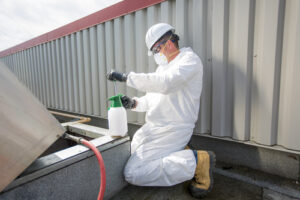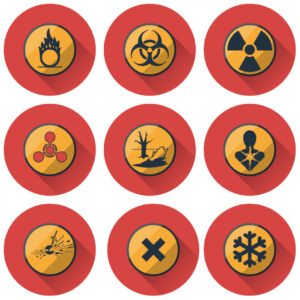Whether it is in a work-related context or not, exposure to chemicals is never a trivial matter. Some seemingly innocuous activities (storage and handling, for example), actually put personnel in contact with hazardous substances. Others, on the other hand, leave no doubt as to the chemical risk they pose (such as the disposal or treatment of chemicals)
A survey conducted in France showed that more than a third of employees have been exposed ‘to at least one hazardous chemical (HC)’. For carcinogenic products, 10% of the employees interviewed claimed they had been exposed to at least one during the seven days preceding the survey. This still involves 2.2 million employees.
Chemicals are not the only source of damage. Sawdust, carcinogens, asbestos, solvents and diesel fumes are also partly responsible for the figures mentioned above. While the majority of these workers are employed in the construction and industrial sectors, the self-employed are far from being immune.
To get a clearer picture of the various steps, we review the obligations of employers as well as the various steps involved in a chemical risk assessment. This tool will help you to not forget anything.
Your obligations regarding chemical hazards
When your employees’ work requires them to use hazardous, carcinogenic, mutagenic and reprotoxic (CMR) chemicals, the law provides for a few health-related obligations you need to comply with.

- You need to approach an inspection body to have these substances assessed;
- Samples will be taken regularly;
- For workers exposed to chemical inhalation, their exposure will be measured and verified on set dates. Note that this guideline also applies to Category 1 CMRs and HCs whose risks have been established, even at residual levels, and for which a regulation has specified an occupational exposure limit value (OEL);
- You will use current regulations as a basis to identify those HCs associated with the notion of arduous working conditions.
Being aware of chemical hazards and prioritising them requires a strict evaluation of them. This is the first key step in protecting your employees as best you can and complying with the Labour Code.
How do I do a chemical risk assessment?
Several actions enable you to assess chemical risks in your industry. These can be divided into five key areas:
- Identifying activities that pose risks for your employees
- Creating and implementing preventative and protective measures, helping reduce and even eliminate risks
- Periodically checking employees’ exposure to chemicals
- Assessing the arduousness of working conditions
- Compliance with regulations
- The various steps of risk assessment
Several mandatory steps, of which there are also five, help assess chemical risk.
- Step 1: identify chemical hazards.
- Step 2: list the areas, work stations and tasks that involve contact with these chemicals.
- Step 3: have the work stations and tasks to be undertaken examined in detail
- Step 4: using the methodology made available by the INRS, assess and prioritise the identified risks. And finally,
- Step 5: draft a chemical risk assessment report and come up with a series of logical and relevant actions.

Alongside these mandatory steps, there are three other optional ones. These include developing a sampling strategy, exposure testing, accounting for similarities and differences in the groups tested, and assessing the arduousness of working conditions.
To develop an effective plan of action for your sector, your workforce and their particular risks, combine technical measures (such as removing or substituting products or processes, collective protection such as collecting emissions at the source, etc.) with organisational ones (such as emergency procedures or hygiene rules, amongst others). To go further, plan health and safety information campaigns and training sessions for your employees.